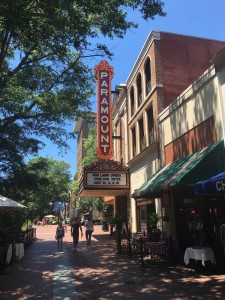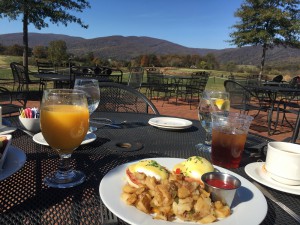In 2016, authors local to the Charlottesville area published over 40 books, ranging from poetry collections to photography books to novels written on the timeless themes of love and loss. The list of Charlottesville authors includes several recognizable names, such as bestselling authors John Grisham, Jan Karon, and Rita Mae Brown, award-winning author and former poet laureate Rita Dove, as well as newcomer Margot Lee Shetterly, whose novel Hidden Figures was adapted to film for a major motion picture released to theaters this month. Whether it is the rolling hills and beautiful mountain views that offer inspiration, the intellectual draw of the University of Virginia, or the small but vibrant urban center of Charlottesville that stimulates ideas and conversation, it’s evident that many writers are making a home for themselves in this particularly lovely piece of central Virginia.
Here is the list we’ve compiled of books published by area writers in 2016. Let us know if we’ve overlooked anyone!
FICTION
Nine Island (Catapult) by Jane Alison. A woman in Miami translates Ovid and considers giving up love, all while observing the complex relationship dynamics within her condo community.
Some of the Parts (Knopf Books for Young Readers) by Hannah Barnaby. A teen reeling from her brother’s accidental death searches for his organ donation recipients in hopes of finding closure.
Cakewalk: A Novel (Bantam) by Rita Mae Brown. Sisters in a southern town test the boundaries that define their lives in the aftermath of WWI.
Tall Tail: A Mrs. Murphy Mystery (Bantam) by Rita Mae Brown. A crime in present-day Crozet, Virginia leads Harry to research a murder that happened in 1784, all with the help of her feline companions.
Ninja Librarians: A Sword in the Stacks (Sourcebooks Jabberwocky) by Jenn Swann Downey. In this middle-grade young adult book, Dorrie time travels to 1912 England as an apprentice of the society of ninja librarians she has stumbled upon.
The Other Side of Hope (CreateSpace) by R.F. Dunham. In this work of speculative fiction, the eastern hemisphere is the economic center of the world and Islam is the dominant religion when a terrorist attack sparks a war between east and west.
The Whistler (Doubleday) by John Grisham. Lacy Stoltz investigates a judge accused of helping to fund a mafia-backed casino who is now pocketing casino money.
Theodore Boone: The Scandal (Dutton Books for Young Readers) by John Grisham. A 13-year-old investigates possible cheating on standardized tests at his school.
Scamming Death, The Scary Mary Series (CreateSpace) by S.A. Hunter. Protagonist Mary battles the angel of death who is terrorizing a nursing home.
Nitro Mountain: A Novel (Knopf) by Lee Clay Johnson. This novel follows the dramas within an Appalachian Virginia town.
Barhoppers: The Answer Man and Other Bar Plays (Indie Theater Now) by Joel Jones. These short, comedic plays with a philosophical bent explore themes of love, ambition, and testing social boundaries.
Come Rain or Come Shine, Mitford Series (G.P. Putnam’s Sons) by Jan Karon. Dooley Kavanagh and Lace Harper finally wed– in a barn.
Invisible Fault Lines (Simon & Schuster Books for Young Readers) by Kristen-Paige Madonia. A modern teen’s father disappears on a construction site. Possible clues lead her to research the 1906 San Francisco earthquake.
Done Growed Up, Apron Strings Trilogy Volume 2 (Westropp Press) by Mary Morony. This second book in the series continues the story of the Mackey family and their black maid in the 1950s American South.
Lost and Found, The Maria Series Book 5 (CreateSpace) by Ella Rea Murphy. In the late 1940s, protagonist Maria explores the new economic freedom available to women, while also preoccupied with thoughts of three different men.
Grave New World, Slate & Ashe Series No. 4 (Echelon Graphic Novels) written by Ethan Murphy, edited by Susan L. Holland, art by Luigi Teruel. The titular evolved zombie and outlaw run from one problem only to stumble upon another: an armed militia.
Pigloo (Henry Holt & Co.) by Anne Marie Pace. In this picture book a young pig plans to explore the North Pole, despite the naysaying of his sister.
Losing It (Riverhead Books) by Emma Rathbone. Julia, an adult woman who happens to be a virgin, spends the summer with her single, ageing aunt only to learn that her aunt has also unintentionally remained chaste. Julia is on a mission to find out how this happened and how she can avoid a similar fate.
There Is Nothing Strange (Holland House) by Susan Pepper Robbins. This novel explores the entanglements of a love triangle between married couple Laura and Jeremy, and their friend Henry.
The Giant, Quarantine Book 4 (Carolrhoda Lab TM) by Lex Thomas (writing team Lex Hrabe and Thomas Voorhies). In the fourth book in the Quarantine series, protagonist Gonzalo searches for his love, Sasha.
NONFICTION & POETRY
Cut on the Bias: Poems (Laughing Fire Press) by Patricia Asuncion. In this collection of poetry, the personal is the political as the author writes of growing up a biracial Filipino American in inner-city Chicago.
Waking to Beauty: Encounters with Remarkable Beings (Rainbow Ridge) by Rosalyn Berne. While recounting her connection to horses, the author considers the presence of divinity in the animal kingdom.
Homes and Haunts: Touring Writers’ Shrines and Countries (Oxford University Press) by Alison Booth. This study explores public interest in writers’ homes.
FLOAT: Becoming Unstuck for Writers (Be Well Here) by AM Carley. This helpful guide consists of exercises and prompts to stimulate the writing mind by a professional writing coach.
Collected Poems: 1974-2004 (W.W. Norton & Company) by Rita Dove. This robust collection spans thirty years of the former poet laureate’s career, ranging from subjects of motherhood, language, and African American identity.
Why Write? A Master Class on the Art of Writing and Why It Matters (Bloomsbury USA) by Mark Edmundson. The author explores the titular question and why writing is a vital form of expression.
The Preschool Parent Primer (IvyArtz) by Pamela Evans. This petite primer is packed with everything preschool teachers wish their students’ parents knew.
Shantytown, USA: Forgotten Landscapes of the Working Poor (Harvard University Press) by Lisa Goff. This scholarly book follows the history of shantytowns.
The Perfect Season: A Memoir of the 1964-1965 Evansville College Purple Aces (University of Indiana Press) by Russell Grieger. This memoir reflects back on that rare experience in athletics: completing the perfect season.
Just Around Midnight: Rock and Roll and the Racial Imagination (Harvard University Press) by Jack Hamilton. This scholarly book explores what led to the whitewashing of rock and roll.
For Love of the Land: A History of the Wintergreen Community (The Nature Foundation at Wintergreen) by Mary Buford Hitz. This illustrated coffee table book chronicles the conservation efforts that led to the creation of Wintergreen resort.
First Entrepreneur: How George Washington Built His—and the Nation’s—Prosperity (Da Capo Press) by Edward G. Lengel. This book explores the economic principles that informed Washington’s approach to government.
Whistle What Can’t be Said: Poems (Unicorn Press) by Charlotte Matthews. These poems reflect on the author’s experiences in childhood, and with cancer and survival.
Night Sky Frequencies and Selected Poems (Sheep Meadow Press) by Debra Nystrom. The common thread that ties these poems together is a narrative that follows the lives of two abandoned children.
Scattering Ashes: A Memoir of Letting Go (She Writes Press) by Joan Z. Rough. This deeply personal and emotional memoir chronicles the challenges and rewards of caring for an aging parent with whom the author had a difficult relationship.
Hidden Figures: The American Dream and the Untold Story of Black Women Mathematicians Who Helped Win the Space Race (William Morrow & Company) by Margot Lee Shetterly. This New York Times Bestseller recounts the true story of four African American women mathematicians whose calculations for NASA made space travel possible.
Mockingbird: A Portrait of Harper Lee, from Scout to Go Set a Watchman (Henry Holt & Co.) by Charles Shields. In this revised biography, the author considers the posthumous publication of Lee’s Go Set a Watchman.
Monticello in Mind: Fifty Contemporary Poems on Jefferson (University of Virginia Press) edited by Lisa Russ Spaar. A collection of various poets explores and interrogates Thomas Jefferson’s complicated legacy.
God of Earth: Discovering a Radically Ecological Christianity (Westminster John Knox Press) by Kristin Swenson. The author, an associate professor of religious studies, explores the sacred in the natural world.
I’m Not from the South, But I Got Down Here as Fast as I Could (Sartoris Literary Group) by Tony Vanderwarker. In this memoir the author recounts his migration to, and immersion in, the south.
Glass Harvest (Autumn House) by Amie Whittemore. This collection of poetry examines love and loss with language that often references nature.
ART BOOKS
Carry Me Ohio (Sturm & Drang) by Matt Eich. This collection of photographs documents the ten years the photographer spent with the people of southeastern Ohio.
The Philosopher’s Style (Grey Book) by Beatrix Ost. This eclectic collection combines fiction, interviews, and visual art from the author’s collection.
Flash: The Photography of Ed Roseberry: Charlottesville, Virginia 1940s-1970s (C’ville Images) by Steve Trumbull. Vintage black and white photographs show Charlottesville in the mid-1900s.



